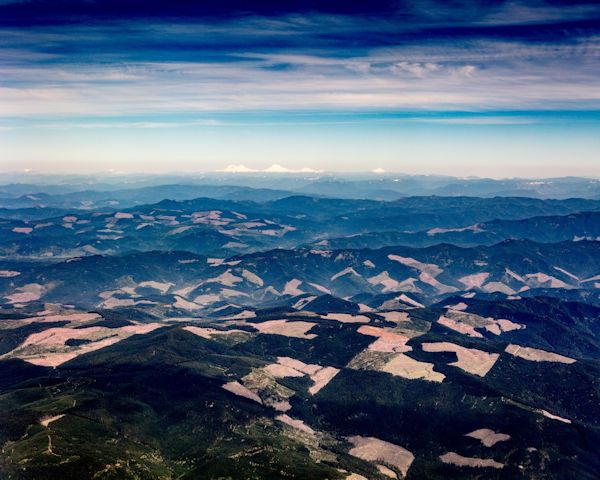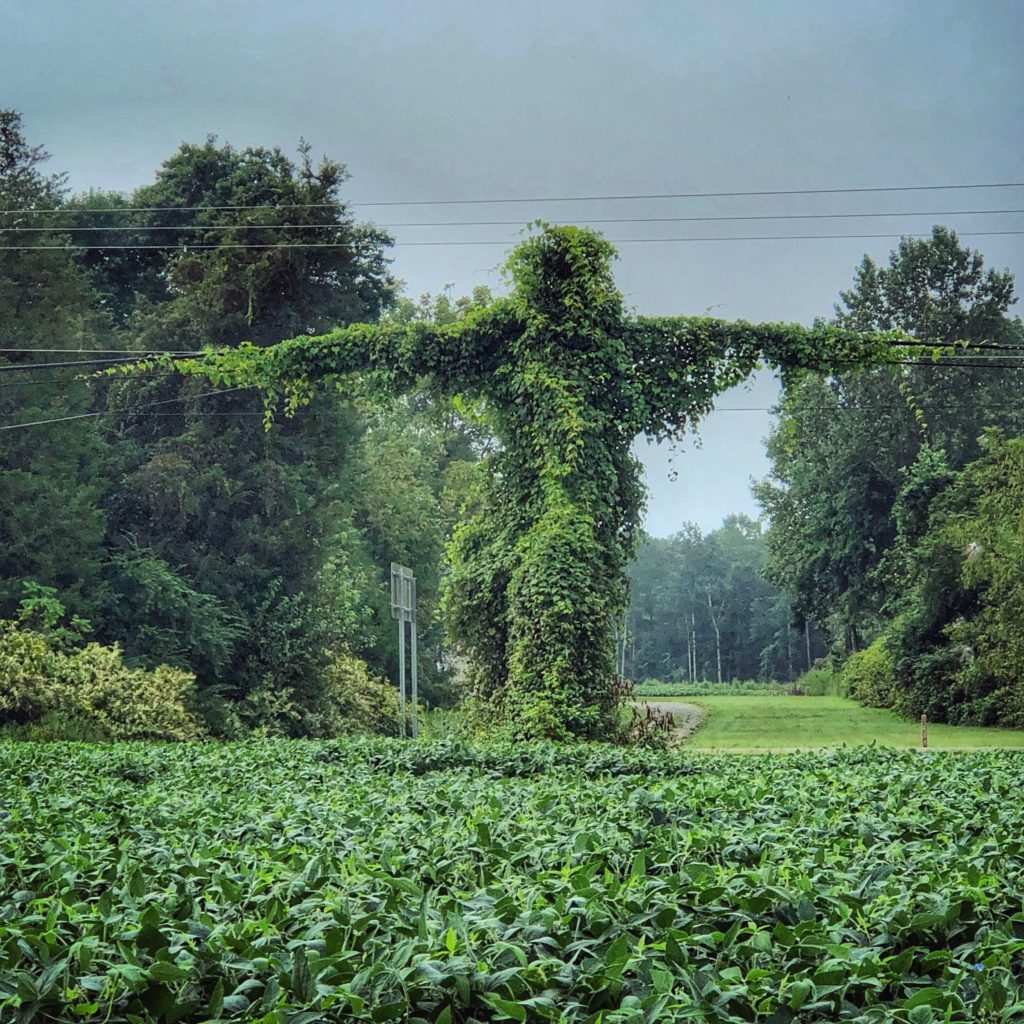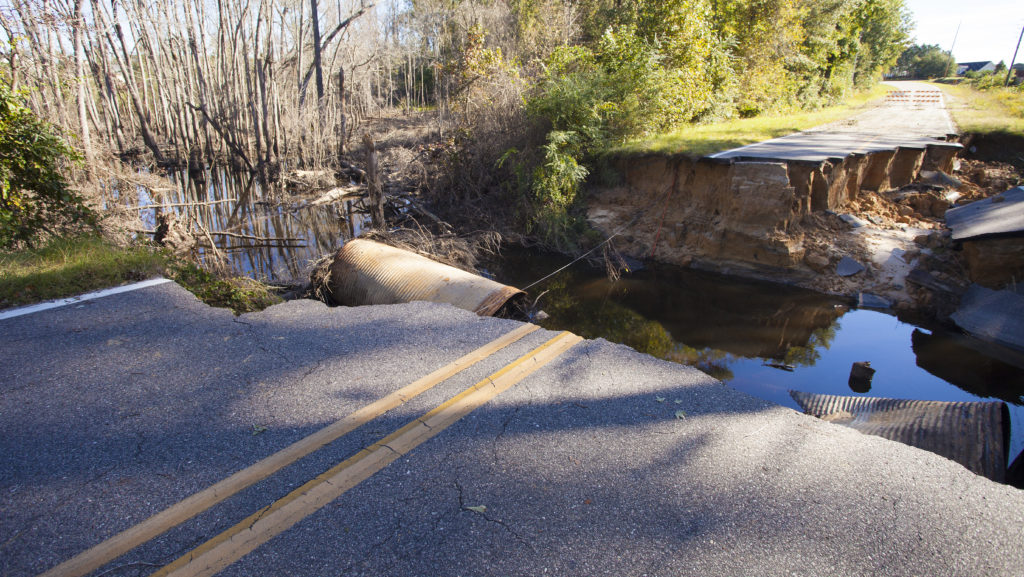Dennis Dimick has focused his journalism career on the collision between human aspiration and the planet. The son of fisheries biologists, Dimick grew up on a farm in Oregon’s Willamette Valley, and he holds degrees in agriculture and agricultural journalism from Oregon State University and the University of Wisconsin-Madison. In his 35 years at National Geographic, he served for over a decade as the magazine’s environment editor, and guided major projects on climate change, energy, freshwater, population, and food security. Dimick is co-founder of Eyes on Earth, a project meant to inspire a new generation of environmental photographers.
As a young man, Dimick witnessed firsthand the price of progress when his family’s farm was cut in half by the construction of an interstate beltway. This invasion of their farm, in addition to the clear-cut logging of nearby forests where Dimick had spent his youth, combined to sensitize him to the profound impacts of human progress on the Earth. Early photography experience and his personal connection to the effects of human progress led to a life and career spent combining these two dimensions.

In anticipation of his participation in the 2018 Wisconsin Science Festival, I asked Mr. Dimick some questions about photojournalism, and what it’s like documenting the human impact on the environment. Some of his answers have been slightly edited for clarity.
What does it take to be a good environmental photographer?
Primarily, one needs to be curious, to have studied or understand science and how it works, [to have] an understanding of journalism, its principles and role in society, to understand how economic and political systems work, and have an interest and willingness to be aware of visual esthetics. Having knowledge of science and the scientific method is very important to effective photography of environmental issues.
Why do you think it is so important to document the environmental challenges facing our society?
The only way [that] we can understand the cumulative impacts we are having on the planet is to document the effects of our presence. Photography, especially when applied over time, can serve as evidence of change. Photography can provide an essential record: of glaciers that are vanishing or once were, [of] landscapes that have been forests and became grasslands due to changes in climate zones, [of forests] converted into domesticated agricultural landscapes. The list could go on and on.
How do you think environmental photography will help as society tries to find a balance between expansion and conservation?
It serves as a record of how we are transforming earth’s remaining natural habitats into domesticated landscapes to support our expanding aspirations. This can cut both ways, to document loss and diminishment, but also restoration and resilience. Photography serve as a record.

One of the benefits humanity has reaped from exploitation of the Earth’s resources is massive advancement of our biotechnological capabilities. How can we turn that around and use it to preserve, maintain and restore the planet?
Unless we can profoundly transform our global energy system in short order (see IPCC Report #SR15 out this week, e.g.) to radically cut atmospheric carbon pollution or actually remove carbon from the atmosphere, the future of civilization as we know it is at risk. If applications of biotechnology, as one tool we have available, can help society confront and meet these epic global challenges, this can be seen as a public good. If tools of biotechnology can help us grow crop varieties, for example, that are resistant to disease, or can survive flooding, saltwater, heatwaves, or drought resulting from climatic disruption, this can also be seen as a public good. There is no one “silver bullet” to meet these challenges, [but] biotech can be one of an array of “bronze buckshot” we rely on to solve problems.
The photos you take are often very emotionally provocative. How do you want/hope people will respond to these photos?
The unique power of photography is to engage us intellectually and emotionally. This is why photography matters: unlike words, photography has the power to get people to pay attention in an instant. This is how we experience the world anyway, through ideas and emotion, our senses like hearing, feeling and eyesight. Photographer[s] can serve as witnesses on our behalf. Powerful images that connect to us emotionally engage hearts. Informational pictures that may connect intellectually may not be memorable because they do not connect with us emotionally. While it is important that photographs engage both our minds and our intellect, we are moved to action when photography help us feel what it was like to be in the situation represented by the photograph. The most affecting and memorable photographs engage both our minds and our hearts.
Do you worry that photographic journalism about the environment will be regarded with the same skepticism we see for traditional writing and reporting on environmental topics?
Photographs do have the potential of showing what something actually looks like, [and] can serve as evidence. The problem is not just with the reporting on environmental issues or on images. Audiences also bring their own biases, and it is difficult to reach individuals who are biased against the reality-based role of journalism in society, perhaps because of closed-mindedness or preconceived beliefs that keep them from accepting new or contradictory information to what they believe or have been told to think is true, or perhaps because they have been subjected to ongoing propaganda efforts to delegitimize institutions such as the press in our society.
I suppose that photographic reportage about the environment will always be seen with skepticism by those individuals in society who are immune to facts, or who have particular viewpoints or economic interests that prevent them from accepting the reality of what they can see with their eyes. The same could be said about the knowledge and ideas taught in universities, and even the Constitution and Bill of Rights. There will always be someone in society who has chosen to ignore reality. It is difficult to defend against individuals and institutions who have chosen to live within their own fantasy – either comforting fantasies manufactured for them by propagandists, or those who choose to perpetuate disinformation for their own benefit as a way to influence how society or the economy works. These motives – underpinned by economic or political agendas – might make individuals or demographic groups unwilling to accept the ideas, views, or realities that either journalism, science, or university education presents to society.
Unless we can agree on a basic set of facts about how democracy, science, and the institutions of democratic society works, or should work, then our nation will face future travails and divisiveness even more severe than we now confront. As President Lincoln said in 1858 before the start of the Civil War, “A house divided against itself cannot stand.”
One can have their own opinions but not their own facts. Instead of having trusted societal narrators like, CBS Evening News Anchor Walter Cronkite was in past decades, we are losing a societal commons as we retreat into information worlds that perpetuate or magnify our preconceived biases or cause us to become loyal to individuals and not to the democratic principles and institutions underpinning our country.
Traditional journalism takes great pride in impartiality—reporting the facts and nothing more. On the other hand, visual narrative tools are not only more emotionally charged, they are actually meant to inspire deeper, more visceral reactions. Could you talk a bit about this contrast?
I would say the role of journalism in American society (as defined and protected by the First Amendment of the Bill of Rights to the U.S. Constitution,) is more than to just be “impartial” and to just “report the facts and nothing more.” The definition of journalism as put forth by the American Press Institute:
The “value [of journalism] flows from its purpose, to provide people with verified information they can use to make better decisions, and its practices, the most important of which is a systematic process – a discipline of verification – that journalists use to find not just the facts, but also the “truth about the facts.”
The truth about facts. That’s a good place to move on from.
At some point the value of journalism is to offer insight and understanding, to help people understand the context and meaning of facts, of what we read, hear, or see. That insight cannot be provided by just standing back and serving up data and facts and letting readers figure it out. The purpose is not to be prescriptive, but descriptive, explanatory. [J]ournalism can offer information that helps citizens assess the choices and options available and lets readers or viewers choose how to act or not, based on the information presented by journalists.
The matter with photographs needs to be thought of in terms of bearing witness. Also, it is impossible to say that any journalism, either words, or pictures is somehow impartial. We all bring bias to this, whether we are the reporter or photographer, or the reader or viewer. Everyone comes with their own backgrounds, upbringing, education, and perceptions, and preconceptions. All we can do is be honest and transparent, and be straightforward about our intentions. Journalism is more than stenography.
An important quality is motive. It is impossible to prevent someone with an agenda to deceive or misrepresent from their doing so, someone could pose as a journalist with the goal of deceiving audiences or misrepresenting fact and information in order to further a personal or financial agenda. (And this has been done frequently in print and online with the goal of misinforming the public.) So it is very important for audiences to check and verify the veracity of the information they read online or anywhere.
Often attributed to George Orwell is the quote, “Journalism is printing what someone else does not want printed, all the rest is public relations.” The purpose of journalism in words, audio, or video, photographs, is to shine a light into the darkness, to highlight something not otherwise revealed, or that someone does not want known. With its revelation this information can help citizens become better informed or better understand the functions or failure of society. What makes the United States unique among all nations of the world is the First Amendment. It is society’s last line of defense against tyranny.
To read more about Dennis Dimick’s life and work, check out the following article: https://www.sej.org/publications/inside-story/veteran-photo-editor-making-visual-storytelling-lead-actor
Latest posts by Julia Nepper (see all)
- Reliable DNA Purification from 3D Cell Cultures - November 18, 2019
- WiSciFest 2019: A Retrospective - October 21, 2019
- Anti-Cancer Drugs Are Pro-Coral - August 26, 2019

